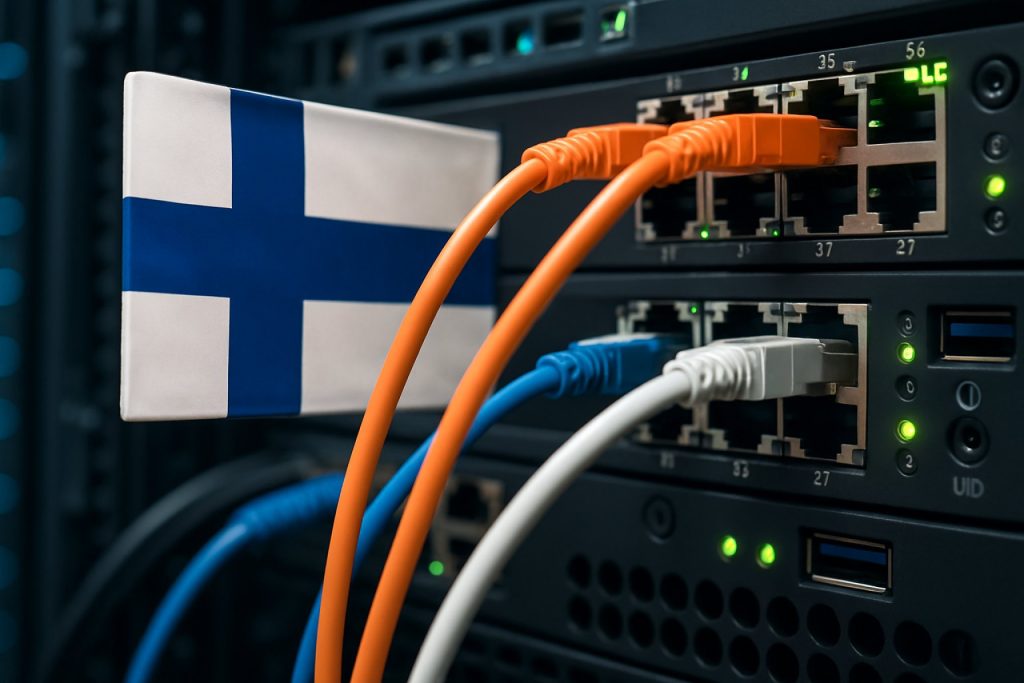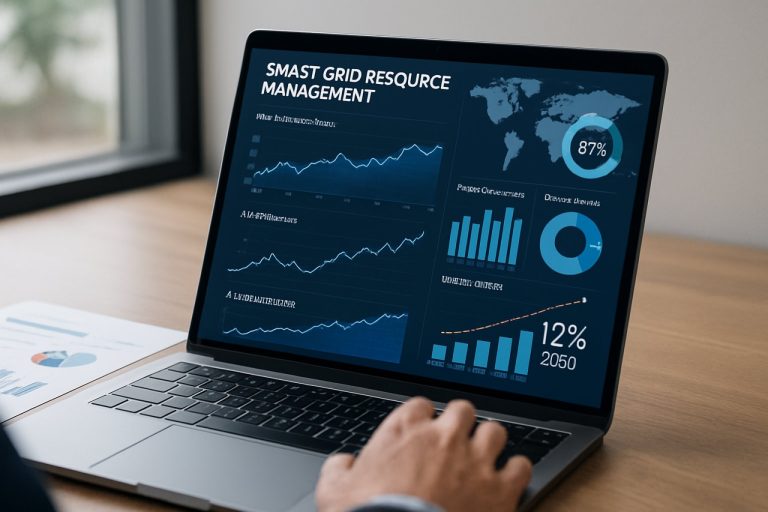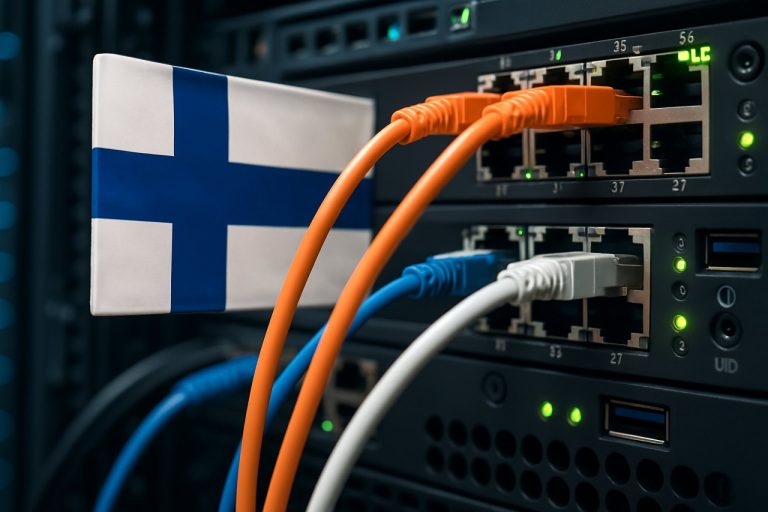
Inside Finland’s Digital Revolution: The Untold Story of Building a Top-Tier Internet Network
- Finland’s Internet Market: Scope, Scale, and Key Drivers
- Innovations Powering Finland’s High-Speed Connectivity
- Key Players and Market Dynamics in Finnish Internet Services
- Projected Expansion and Investment in Finland’s Internet Sector
- Connectivity Across Finland: Urban-Rural Disparities and Regional Strengths
- What’s Next for Finland’s Internet Ecosystem?
- Barriers to Progress and Emerging Opportunities in Finnish Connectivity
- Sources & References
“Executive Summary The Internet of Things (IoT) market is surging toward record growth in 2025, on track to approach the $1 trillion milestone in annual global spending rcrwireless.com gsmaintelligence.com.” (source)
Finland’s Internet Market: Scope, Scale, and Key Drivers
Finland has emerged as a global leader in internet infrastructure, consistently ranking among the top countries for broadband speed, reliability, and accessibility. The nation’s success is rooted in a combination of forward-thinking policy, robust investment, and a culture that values digital inclusion. As of 2024, Finland boasts an average fixed broadband speed of over 200 Mbps, placing it in the top 10 worldwide according to Ookla’s Speedtest Global Index. Mobile internet is equally impressive, with 5G coverage reaching more than 85% of the population (5G Observatory).
- Policy and Regulation: Finland was the first country to make broadband access a legal right in 2010, mandating that every citizen should have access to at least a 1 Mbps connection (BBC). This policy has since evolved, with the government targeting universal access to 100 Mbps connections by 2025 (Finnish Government).
- Investment in Fiber and 5G: Finland’s telecom operators, including Elisa, Telia, and DNA, have invested heavily in fiber-optic and 5G networks. As of 2023, over 70% of Finnish households have access to fiber connections, and the country is a European frontrunner in 5G deployment (FTTH Council Europe).
- Geographic and Demographic Challenges: Despite a sparse population and challenging terrain, Finland’s public-private partnerships have enabled high-speed connectivity even in remote areas. The government’s “Broadband for All” initiative subsidizes rural network expansion, ensuring digital equity (Ministry of Transport and Communications).
- Digital Literacy and Demand: High digital literacy rates and a tech-savvy population drive demand for fast, reliable internet. Finland’s education system integrates digital skills from an early age, fostering a society ready to leverage advanced connectivity (OECD).
Finland’s quiet but determined approach—combining policy innovation, investment, and social commitment—has built one of the world’s best internet networks, setting a benchmark for digital infrastructure globally.
Innovations Powering Finland’s High-Speed Connectivity
Finland’s reputation as a digital frontrunner is no accident; it is the result of decades of strategic investment, policy innovation, and technological advancement. The country consistently ranks among the world’s leaders in internet speed, reliability, and accessibility. According to the Speedtest Global Index, Finland’s median fixed broadband speed surpassed 120 Mbps in early 2024, placing it in the top 10 globally. This achievement is underpinned by a combination of forward-thinking regulation, robust infrastructure, and a culture that embraces digitalization.
- Universal Broadband Access: Finland was the first country in the world to make broadband access a legal right in 2010. This policy mandated that every citizen must have access to at least a 1 Mbps connection, a threshold that has since been raised as technology advanced (BBC).
- Fiber-First Infrastructure: The Finnish government and private sector have heavily invested in fiber-optic networks, with over 70% of households now able to access high-speed fiber connections (Traficom). This focus on future-proof infrastructure has enabled rapid upgrades and scalability.
- 5G Leadership: Finland is a pioneer in 5G deployment, with all major cities and over 80% of the population covered by 5G networks as of 2024 (Nokia). Finnish companies like Nokia and Elisa have played a crucial role in both domestic and global 5G rollouts.
- Collaborative Ecosystem: The Finnish model emphasizes public-private partnerships, with municipalities, telecom operators, and the state working together to expand coverage, especially in rural areas. This collaborative approach has minimized digital divides and ensured nationwide high-speed access (OECD).
Finland’s quiet success in building one of the world’s best internet networks is rooted in its commitment to digital inclusion, technological innovation, and a regulatory environment that encourages investment and competition. As a result, Finnish consumers and businesses enjoy some of the fastest, most reliable, and most affordable internet services globally, powering the nation’s digital economy and setting a benchmark for others to follow.
Key Players and Market Dynamics in Finnish Internet Services
Finland’s internet infrastructure is often cited as one of the most advanced and reliable in the world, a status achieved through a combination of forward-thinking policy, robust investment, and a competitive market landscape. The country’s journey toward high-speed connectivity began in earnest in the early 2000s, culminating in a landmark decision in 2010 to make broadband access a legal right for every citizen (BBC). This policy move set the stage for rapid expansion and modernization of the national network.
Key players in the Finnish internet services market include Elisa, DNA, and Telia Finland. These companies have consistently invested in fiber-optic and 5G infrastructure, driving Finland’s average fixed broadband speed to 168.5 Mbps as of 2023, well above the European average (Speedtest Global Index). The competitive environment has kept prices reasonable and service quality high, with over 94% of Finnish households having access to high-speed broadband (Eurostat).
Several factors underpin Finland’s success:
- Government Policy: Early recognition of internet access as a basic right spurred nationwide infrastructure development, including in rural and remote areas.
- Public-Private Partnerships: Collaboration between government and telecom operators facilitated efficient rollout of new technologies, such as fiber and 5G.
- Innovation and R&D: Finland’s strong technology sector, exemplified by companies like Nokia, has contributed to a culture of innovation and technical expertise in network deployment.
- Regulatory Environment: The Finnish Communications Regulatory Authority (FICORA, now part of Traficom) has maintained a pro-competition stance, ensuring consumer choice and market dynamism (Traficom).
As a result, Finland consistently ranks among the top countries for digital infrastructure and internet quality. The country’s quiet but determined approach—prioritizing universal access, fostering competition, and embracing new technologies—has made it a model for high-speed internet deployment worldwide.
Projected Expansion and Investment in Finland’s Internet Sector
Finland’s internet infrastructure is often cited as one of the most advanced and reliable in the world, a status achieved through a combination of forward-thinking policy, robust investment, and a culture that values digital inclusion. As the country looks to the future, projections indicate continued expansion and significant investment in high-speed connectivity, positioning Finland as a leader in the next generation of digital services.
Finland’s journey began with early government intervention: in 2010, it became the first country to make broadband access a legal right, mandating that every citizen have access to at least a 1 Mbps connection (BBC). This policy spurred rapid infrastructure development, with both public and private sectors investing heavily in fiber-optic networks. By 2023, over 80% of Finnish households had access to fixed broadband speeds of at least 100 Mbps, and 5G coverage reached more than 85% of the population (Traficom).
Looking ahead, the Finnish government has set ambitious targets: by 2025, it aims for 90% of households to have access to gigabit-speed connections, supported by the EU’s Digital Decade goals (European Commission). To achieve this, Finland is leveraging a mix of public funding, EU recovery funds, and private investment. In 2023, the government allocated €50 million to rural broadband expansion, while major telecom operators like Elisa, DNA, and Telia have announced multi-year investments totaling over €500 million to upgrade networks and expand 5G and fiber coverage (Elisa).
- Fiber Expansion: Finland’s fiber-optic network is expanding rapidly, with rural areas prioritized to close the digital divide. By 2027, fiber is expected to reach 70% of all households (Traficom).
- 5G Leadership: Finland is among the top European countries for 5G availability and speed, with average download speeds exceeding 300 Mbps in major cities (Opensignal).
- Innovation Ecosystem: The robust network underpins Finland’s thriving tech sector, supporting innovations in IoT, AI, and smart city solutions.
Finland’s quiet but determined approach to building world-class internet infrastructure is now paying dividends, attracting foreign investment and enabling digital transformation across industries. As expansion continues, Finland is set to remain at the forefront of Europe’s digital future.
Connectivity Across Finland: Urban-Rural Disparities and Regional Strengths
Finland has emerged as a global leader in high-speed internet connectivity, quietly constructing one of the world’s most robust and accessible digital networks. This achievement is rooted in a combination of forward-thinking policy, significant public and private investment, and a national ethos that views internet access as a fundamental right. In 2010, Finland became the first country to make broadband access a legal right, mandating that every citizen should have access to at least a 1 Mbps connection—a threshold that has since been raised as technology advanced (BBC).
Today, over 94% of Finnish households have access to fixed broadband connections, and 5G coverage extends to more than 85% of the population, including many rural areas (Traficom). The government’s “Fast Broadband for All” initiative, launched in 2008, set ambitious targets for fiber-optic deployment, aiming for 100 Mbps connections to be available to 99% of the population by 2025. As of 2023, Finland ranks among the top countries globally for average internet speed, with median fixed broadband speeds exceeding 120 Mbps and mobile speeds averaging over 80 Mbps (Speedtest Global Index).
Key to Finland’s success has been its collaborative approach. Municipalities, local cooperatives, and telecom operators have worked together to extend fiber networks even to remote communities. The government has provided subsidies and regulatory support to ensure that sparsely populated regions are not left behind. For example, the Lapland region, despite its vast and challenging terrain, boasts some of the highest rural broadband penetration rates in Europe (Lapland Regional Council).
While urban centers like Helsinki, Tampere, and Turku enjoy ultra-fast gigabit connections and dense 5G coverage, the real strength of Finland’s network lies in its inclusivity. Rural areas, often underserved in other countries, benefit from reliable, high-speed connections that support remote work, digital healthcare, and education. This digital equity has helped bridge the urban-rural divide, fostering economic resilience and social cohesion across the country.
Finland’s high-speed internet infrastructure stands as a model for other nations, demonstrating that with strategic investment and a commitment to universal access, even the most remote communities can be seamlessly connected to the digital world.
What’s Next for Finland’s Internet Ecosystem?
Finland’s internet infrastructure is often overshadowed by larger European neighbors, yet it consistently ranks among the world’s best for speed, reliability, and accessibility. The country’s high-speed secret lies in a combination of early policy decisions, robust public investment, and a culture that values digital inclusion.
Finland was one of the first countries to declare broadband internet access a legal right in 2010, mandating that every citizen should have access to at least a 1 Mbps connection (BBC). This policy spurred rapid infrastructure development, especially in rural and remote areas. By 2023, over 94% of Finnish households had access to fixed broadband with speeds of at least 100 Mbps, and 5G coverage reached more than 85% of the population (Traficom).
Finland’s approach has been characterized by strong collaboration between government, municipalities, and private telecom operators. The government provided subsidies and incentives for building out fiber-optic networks, particularly in less profitable rural regions. Local cooperatives and municipal networks played a key role, ensuring that even sparsely populated areas were not left behind (FTTH Council Europe).
Another factor is Finland’s early adoption of advanced mobile technologies. The country is home to Nokia, a global leader in telecommunications, which helped drive early 3G, 4G, and now 5G rollouts. As of 2024, Finland ranks among the top five countries globally for average mobile download speeds, with median speeds exceeding 100 Mbps (Speedtest Global Index).
Looking ahead, Finland is investing in next-generation networks, including 6G research, and expanding fiber-to-the-home (FTTH) coverage. The government’s “Digital Compass” strategy aims for universal gigabit connectivity by 2030 (Finnish Government). This continued commitment to high-speed, inclusive internet ensures Finland will remain a global leader in digital infrastructure, quietly setting the standard for others to follow.
Barriers to Progress and Emerging Opportunities in Finnish Connectivity
Finland’s ascent to the top tier of global internet connectivity is a story of strategic investment, policy foresight, and a culture that values digital inclusion. Despite its relatively small population and challenging geography, Finland boasts some of the fastest and most reliable internet networks worldwide. According to the Speedtest Global Index, Finland consistently ranks among the top countries for both fixed broadband and mobile internet speeds, with median download speeds exceeding 100 Mbps in urban areas and robust coverage even in remote regions.
Several factors have contributed to this success. The Finnish government declared broadband access a legal right in 2010, mandating that every citizen should have access to at least a 1 Mbps connection—a threshold that has since been raised. This policy spurred nationwide infrastructure development, including extensive fiber-optic deployment and the early adoption of 4G and 5G technologies. As of 2023, over 80% of Finnish households have access to high-speed broadband, and 5G coverage reaches more than 85% of the population (Traficom).
However, barriers remain. Rural and sparsely populated areas still face higher costs and logistical challenges in network expansion. The “last mile” problem—delivering high-speed connections to remote homes—persists, despite government subsidies and public-private partnerships. Additionally, the rapid pace of technological change requires continuous investment to upgrade infrastructure and maintain cybersecurity standards (European Parliament Briefing).
Emerging opportunities are on the horizon. Finland’s leadership in 6G research, spearheaded by the University of Oulu’s 6G Flagship program, positions the country at the forefront of next-generation connectivity. The government’s commitment to digitalization, combined with a tech-savvy population, creates fertile ground for innovations in smart cities, IoT, and remote work solutions. Furthermore, Finland’s stable regulatory environment and emphasis on digital rights continue to attract investment from global technology firms.
In summary, Finland’s high-speed internet network is the result of deliberate policy, sustained investment, and a forward-looking approach. While challenges remain, the country’s proactive stance ensures it remains a model for digital connectivity and a testbed for future technologies.



